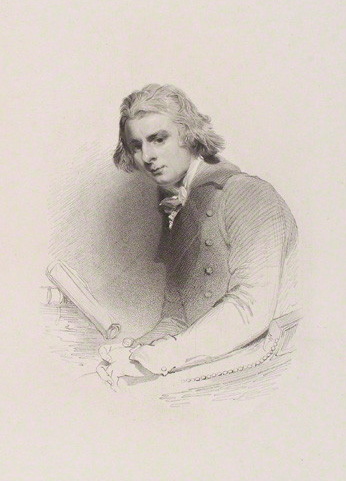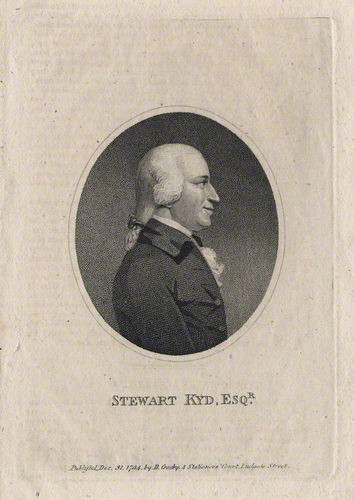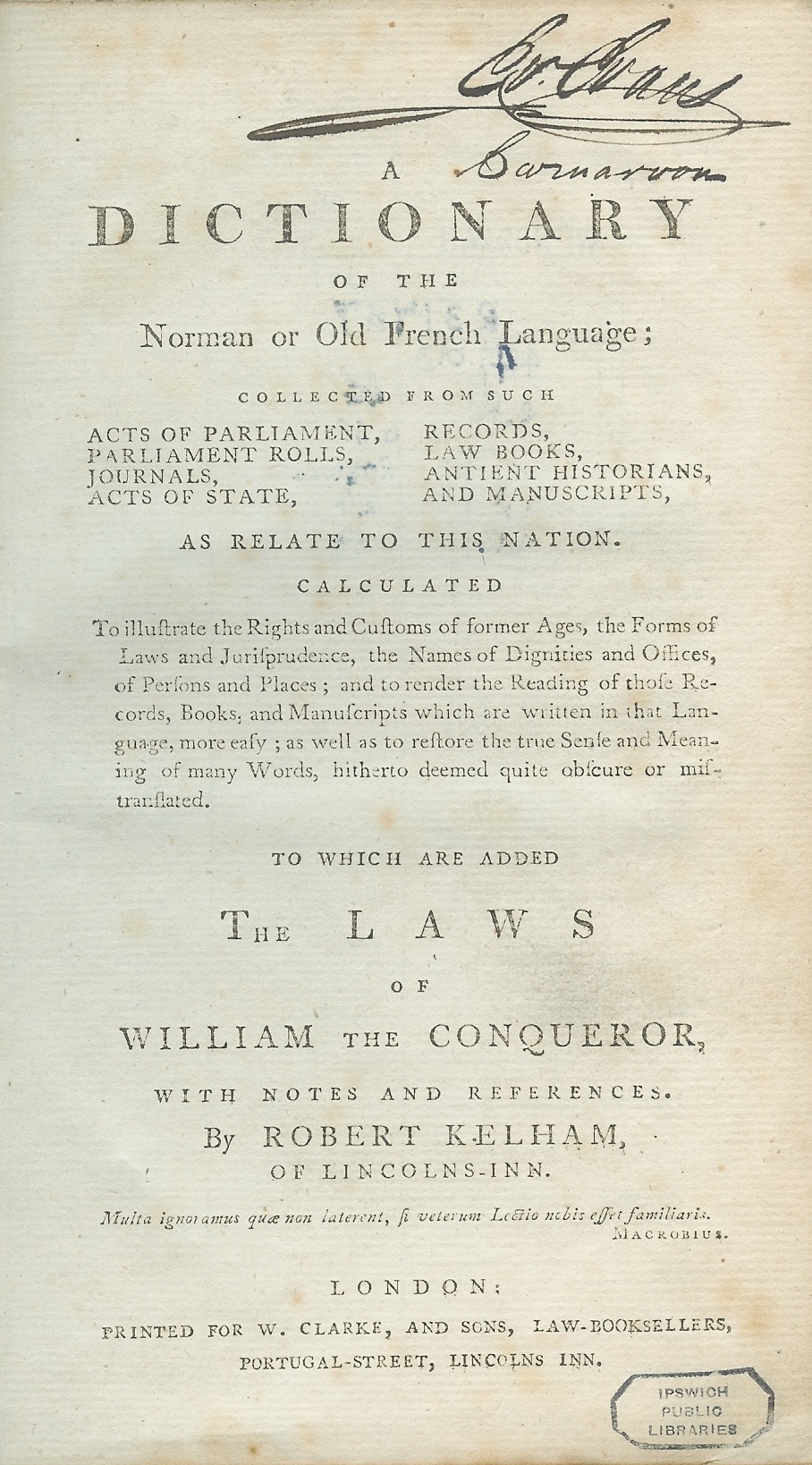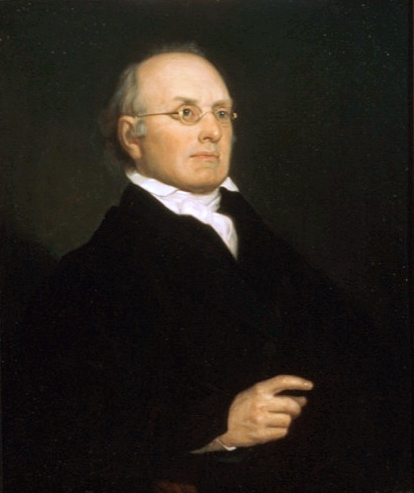|
Comyns' Digest
''A Digest of the Laws of England'', also known as ''Comyns' Digest'', is a book by Sir John Comyns. The latest English edition was published in 1822. A 120-page, handwritten tabulation by John Neal in 1826 of all cases in the digest is included with the Jeremy Bentham papers at the University College London. In 1847, John Gage Marvin said: References *Comyns, Sir John. A Continuation of Comyns' Digest of the Laws of England, brought down to the present time by a gentleman of the Inner Temple. fol. London. 1776. 2d ed. of ''Comyns' Digest'', with the continuation included under one alphabet. fol. London. 1781. 3d ed. with additions, by Stewart Kyd. 6 vols. 8vo. London. 1792. 4th ed. enlarged and continued down to the present time, by Samuel Rose. 6 vols. 8vo. London. 1800. 5th ed. enlarged and continued to the present time, by Anthony Hammond Anthony Hammond (1668–1738), of Somersham Place, Huntingdonshire and Lidlington, Bedfordshire, was an English official and Tory pol ... [...More Info...] [...Related Items...] OR: [Wikipedia] [Google] [Baidu] |
John Comyns
Sir John Comyns SL (c. 1667 – 1 November 1740), of Writtle in Essex, was an English judge and Member of Parliament. Early life He was born the eldest surviving son of William Comyns, barrister, of Lincoln's Inn and his wife Elizabeth, the daughter and coheiress of Matthew Rudd of Little Baddow, Essex. He was educated at Felsted School and Queens' College, Cambridge. Career Comyns was a member of Lincoln's Inn, and was called to the bar in 1690. He entered Parliament in 1701 as member for Maldon, and represented that borough for 17 of the next 26 years (1701–08, 1710–15 and 1722–26). On the three separate occasions on which he was returned for Maldon, his opponents petitioned against his election, alleging bribery or improper conduct by the bailiff (who was the returning officer for the borough); but their only success was in 1715 when they also accused him of having refused to take the Qualification Oath, and his election, in that case, was declared void on those gro ... [...More Info...] [...Related Items...] OR: [Wikipedia] [Google] [Baidu] |
Lord Kenyon
Lloyd Kenyon, 1st Baron Kenyon (5 October 1732 – 4 April 1802), was a British politician and barrister, who served as Attorney General, Master of the Rolls and Lord Chief Justice. Born to a country gentleman, he was initially educated in Hanmer before moving to Ruthin School aged 12. Rather than going to university he instead worked as a clerk to an attorney, joining the Middle Temple in 1750 and being called to the Bar in 1756. Initially almost unemployed due to the lack of education and contacts which a university education would have provided, his business increased thanks to his friendships with John Dunning, who, overwhelmed with cases, allowed Kenyon to work many, and Lord Thurlow who secured for him the Chief Justiceship of Chester in 1780. He was returned as the Member of Parliament (MP) for Hindon the same year, serving repeatedly as Attorney General under William Pitt the Younger. He effectively sacrificed his political career in 1784 to challenge the ballot of C ... [...More Info...] [...Related Items...] OR: [Wikipedia] [Google] [Baidu] |
Samuel Rose (barrister)
Samuel Rose (1767–1804) was an English barrister and literary editor, now remembered as the friend of William Cowper, the poet. Life He was born at Chiswick, Middlesex, on 20 June 1767, the second and only surviving son of Dr. William Rose (1719–1786). Samuel was educated for a time at his father's school, and from 1784 to January 1787 at Glasgow University, living in the house of Dr. William Richardson, and gaining several prizes. He also attended the courts of law at Edinburgh, and was on friendly terms there with Adam Smith and Henry Mackenzie. On 6 November 1786 he entered Lincoln's Inn, and, after reading with Serjeant Praed from 1787 to 1790, was called to the bar in 1796. He went the home circuit, attended the Sussex sessions, was ‘encouragingly noticed’ by Lord Kenyon, and appointed counsel to Prince Edward, Duke of Kent and Strathearn. Rose was delicate from early life, and suffered from tuberculosis. He was engaged by William Hayley to defend William Blake a ... [...More Info...] [...Related Items...] OR: [Wikipedia] [Google] [Baidu] |
Stewart Kyd
Stewart Kyd (1759 – 26 January 1811) was a Scottish politician and legal writer. Life A native of Arbroath, Forfarshire, he went at the age of fourteen from Arbroath grammar school to King's College, Aberdeen. Abandoning a design of entering the church, he settled in London, and was called to the bar from the Middle Temple. He became a friend of Thomas Hardy and John Horne Tooke, whose political opinions he admired. In November 1792 he joined the Society for Constitutional Information. On 29 May 1794 he was arrested and examined by the privy counsel but was soon discharged. On 4 June he was again summoned before the counsel, and three days later was committed to the Tower on a charge of high treason, with Hardy, Tooke, and ten others. On 25 October all the prisoners were brought up for trial before a special commission at the Old Bailey, but after the acquittal of Hardy, Tooke and John Thelwall, the attorney-general declined offering any evidence against Kyd, and he was discha ... [...More Info...] [...Related Items...] OR: [Wikipedia] [Google] [Baidu] |
Folio (printing)
The term "folio" (), has three interconnected but distinct meanings in the world of books and printing: first, it is a term for a common method of arranging sheets of paper into book form, folding the sheet only once, and a term for a book made in this way; second, it is a general term for a sheet, leaf or page in (especially) manuscripts and old books; and third, it is an approximate term for the size of a book, and for a book of this size. First, a folio (abbreviated fo or 2o) is a book or pamphlet made up of one or more full sheets of paper, on each of which four pages of text are printed, two on each side; each sheet is then folded once to produce two leaves. Each leaf of a folio book thus is one half the size of the original sheet. Ordinarily, additional printed folio sheets would be inserted inside one another to form a group or "gathering" of leaves prior to binding the book. Second, folio is used in terms of page numbering for some books and most manuscripts that ... [...More Info...] [...Related Items...] OR: [Wikipedia] [Google] [Baidu] |
Commentaries On American Law
''Commentaries on American Law'' is a four-volume book by James Kent. It was adapted from his lectures at Columbia Law School starting in 1794. It was first published in 1826 by O. Halsted and has been reprinted and revised many times since. A twelfth edition was edited by Oliver Wendell Holmes, Jr. Oliver Wendell Holmes Jr. (March 8, 1841 – March 6, 1935) was an American jurist and legal scholar who served as an associate justice of the Supreme Court of the United States from 1902 to 1932.Holmes was Acting Chief Justice of the Un ... A fourteenth edition edited by John M. Gould was published in 1896, and a fifteenth edition edited by Jon Roland was published 1997-2002. Reviews In 1847, commenting on the fifth edition,Kent, J. Commentaries on American Law. 5th ed. 4 vols. 8vo. New York. 1844. J. G. Marvin said: References {{Reflist Law books ... [...More Info...] [...Related Items...] OR: [Wikipedia] [Google] [Baidu] |
Law French
Law French ( nrf, Louai Français, enm, Lawe Frensch) is an archaic language originally based on Old Norman and Anglo-Norman, but increasingly influenced by Parisian French and, later, English. It was used in the law courts of England, beginning with the Norman conquest of England in 1066. Its use continued for several centuries in the courts of England and Wales and Ireland. Although Law French as a narrative legal language is obsolete, many individual Law French terms continue to be used by lawyers and judges in common law jurisdictions (see the section "Survivals in modern legal terminology", below). History The earliest known documents in which ''French'' (i.e. Anglo-Norman) is used for discourse on English law date from the third quarter of the thirteenth century and include two particular documents. The first is '' The Provisions of Oxford'' (1258), consisting of the terms of oaths sworn by the 24 magnates appointed to rectify abuses in the administration of King H ... [...More Info...] [...Related Items...] OR: [Wikipedia] [Google] [Baidu] |
Westminster Hall
The Palace of Westminster serves as the meeting place for both the House of Commons of the United Kingdom, House of Commons and the House of Lords, the two houses of the Parliament of the United Kingdom. Informally known as the Houses of Parliament, the Palace lies on the north bank of the River Thames in the City of Westminster, in central London, England. Its name, which derives from the neighbouring Westminster Abbey, may refer to several historic structures but most often: the ''Old Palace'', a England in the Middle Ages, medieval building-complex largely Burning of Parliament, destroyed by fire in 1834, or its replacement, the ''New Palace'' that stands today. The palace is owned by the Crown. Committees appointed by both houses manage the building and report to the Speaker of the House of Commons (United Kingdom), Speaker of the House of Commons and to the Lord Speaker. The first royal palace constructed on the site dated from the 11th century, and Westminster beca ... [...More Info...] [...Related Items...] OR: [Wikipedia] [Google] [Baidu] |
Dicta
In general usage, a dictum ( in Latin; plural dicta) is an authoritative or dogmatic statement. In some contexts, such as legal writing and church cantata librettos, ''dictum'' can have a specific meaning. Legal writing In United States legal terminology, a ''dictum'' is a statement of opinion considered authoritative (although not binding), given the recognized authoritativeness of the person who pronounced it."dictum", Black's Law Dictionary (8th ed. 2004); C.J.S. Courts §§ 142-143. There are multiple subtypes of ''dicta'', although due to their overlapping nature, legal practitioners in the U.S. colloquially use ''dictum'' to refer to any statement by a court the scope of which extends beyond the issue before the court. ''Dicta'' in this sense are not binding under the principle of ''stare decisis'', but tend to have a strong persuasive effect, by virtue of having been stated in an authoritative decision, or by an authoritative judge, or both. These subtypes include: * ''dict ... [...More Info...] [...Related Items...] OR: [Wikipedia] [Google] [Baidu] |
Together With Some Continental Treatises
''ToGetHer'' (, aka Superstar Express) is a 2009 Taiwanese drama starring Jiro Wang of Fahrenheit, Rainie Yang and George Hu. It was produced by Comic International Productions ( 可米國際影視事業股份有限公司) and directed by Linzi Ping (林子平). It started filming on 4 June 2008 and wrapped in mid-September 2008. It was first broadcast in Taiwan on free-to-air China Television (CTV) (中視) from 15 February to 3 May 2009, every Sunday at 22:00 to 23:30 and cable TV Gala Television (GTV) Variety Show/CH 28 (八大綜合台) on 21 February to 9 May 2009, every Saturday at 21:00 to 22:30. The last two episodes on GTV were aired together as one episode. A few scenes were filmed in the 100% Entertainment recording studio and the building of Gala Television. Synopsis Momo Chen is a quiet and shy girl with Jia Sen as her only friend. She is often forgotten and left behind. Her only interest is to read her manga, "Prince Kashaba." Mars is a superstar whose popularity ... [...More Info...] [...Related Items...] OR: [Wikipedia] [Google] [Baidu] |
Joseph Story
Joseph Story (September 18, 1779 – September 10, 1845) was an associate justice of the Supreme Court of the United States, serving from 1812 to 1845. He is most remembered for his opinions in ''Martin v. Hunter's Lessee'' and ''United States v. The Amistad'', and especially for his ''Commentaries on the Constitution of the United States'', first published in 1833. Dominating the field in the 19th century, this work is a cornerstone of early American jurisprudence. It is the second comprehensive treatise on the provisions of the U.S. Constitution and remains a critical source of historical information about the forming of the American republic and the early struggles to define its law. Story opposed Jacksonian democracy, saying it was "oppression" of property rights by republican governments when popular majorities began in the 1830s to restrict and erode the property rights of the minority of rich men. R. Kent Newmyer presents Story as a "Statesman of the Old Republic" who tri ... [...More Info...] [...Related Items...] OR: [Wikipedia] [Google] [Baidu] |
John Gage Marvin
John Gage Marvin (1815–1855) was an American lawyer, known as a legal bibliographer and figure of the history of California. Early life He was born at Le Raysville, Pennsylvania, and was educated at Wesleyan University in Connecticut. He then taught at Athens Academy, Athens, Pennsylvania from 1840.Michael H. Hoeflich, ''Annals of Legal Bibliography: J. G. Marvin'', Law Library Journal (2004) vol. 96PDF. Three of his brothers attended the school, and a fourth worked the farm at Le Raysville. In 1842 Marvin enrolled at Harvard Law School, from an address given as Towanda, Pennsylvania, and was there for four years, studying under Simon Greenleaf, Joseph Story and Charles Sumner. He graduated LL.B. in 1846, having served as Librarian. Marvin was the last beneficiary (1843–5) of a system of student librarians set up in 1830, who had a rent-free room in Dane Hall and some payment for their services to the Harvard Law Library. In California Towards the end of the Mexican–Ameri ... [...More Info...] [...Related Items...] OR: [Wikipedia] [Google] [Baidu] |





.jpg)
